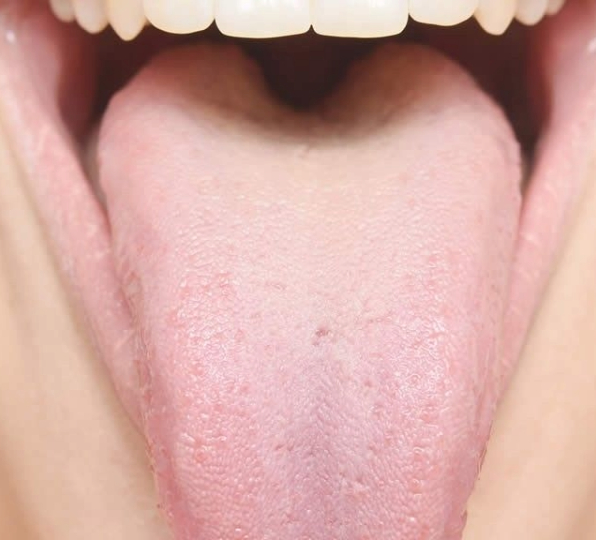Introduction:
Tongue cancer, also known as oral cancer, is a type of cancer that develops in the cells of the tongue. It can occur on the surface of the tongue (squamous cell carcinoma) or within the tongue tissue (oral cavity cancer). While tongue cancer is relatively rare compared to other types of cancer, it can be serious and potentially life-threatening if not detected and treated early. In this article, we’ll delve into what tongue cancer is, its causes, symptoms, risk factors, diagnosis, and treatment options, providing valuable information to help individuals recognize and manage this disease.
1. What is Tongue Cancer
Tongue cancer is a type of cancer that begins in the cells of the tongue. It most commonly occurs on the surface of the tongue, known as the oral tongue, but can also develop within the tongue tissue, known as the base of the tongue. Tongue cancer typically starts as a small, painless lump or sore on the tongue that may grow and change over time. If left untreated, tongue cancer can spread to nearby lymph nodes and other parts of the body.
2. Causes and Risk Factors
The exact cause of tongue cancer is unknown, but several risk factors can increase the likelihood of developing the disease. These risk factors include:
- Tobacco Use: Smoking cigarettes, cigars, or pipes and chewing tobacco can increase the risk of tongue cancer.
- Alcohol Consumption: Heavy alcohol consumption, especially when combined with tobacco use, can significantly increase the risk of tongue cancer.
- Human Papillomavirus (HPV) Infection: Certain strains of HPV, particularly HPV-16, have been linked to an increased risk of tongue cancer.
- Age: The risk of tongue cancer increases with age, with most cases diagnosed in individuals over 40 years old.
- Gender: Men are more likely to develop tongue cancer than women.
- Poor Oral Hygiene: Poor oral hygiene, including lack of regular dental care and chronic irritation from ill-fitting dentures or sharp teeth, may increase the risk of tongue cancer.
3.Symptoms
- The symptoms of tongue cancer can vary depending on the location and stage of the disease but may include:
- Persistent sore throat or lump in the throat
- Difficulty swallowing or chewing
- Pain or discomfort in the mouth or tongue
- White or red patches on the tongue or mouth
- Numbness or tingling in the mouth or tongue
- Swelling or enlargement of the tongue or lymph nodes in the neck
It’s important to note that these symptoms can also be caused by other conditions, so it’s essential to seek medical evaluation if you experience any persistent or concerning symptoms.
4.Diagnosis
Diagnosing tongue cancer typically involves a combination of medical history review, physical examination, and diagnostic tests. Your healthcare provider may perform a visual inspection of the mouth and tongue, palpate the tongue and neck for lumps or swelling, and order imaging tests such as a CT scan or MRI to assess the extent of the disease. A biopsy, in which a small tissue sample is removed and examined under a microscope, is often necessary to confirm the diagnosis of tongue cancer and determine the type and stage of the disease.
5.Treatment
- Treatment for tongue cancer depends on various factors, including the stage and location of the cancer, as well as the individual’s overall health and treatment preferences. Treatment options may include:
- Surgery: Surgical procedures such as tumor excision, partial glossectomy (removal of part of the tongue), or total glossectomy (removal of the entire tongue) may be performed to remove cancerous tissue from the tongue.
- Radiation Therapy: Radiation therapy uses high-energy rays to target and kill cancer cells in the tongue or surrounding tissues.
- Chemotherapy: Chemotherapy involves the use of powerful drugs to kill cancer cells or prevent them from multiplying and spreading.
- Targeted Therapy: Targeted therapy drugs target specific molecules or pathways involved in the growth and spread of cancer cells.
In some cases, a combination of treatments may be recommended to achieve the best possible outcome.


Conclusion:
Breast cancer is a complex disease with many factors influencing its development, diagnosis, and treatment. While a breast cancer diagnosis can be frightening, advances in early detection and treatment have significantly improved survival rates and quality of life for individuals with breast cancer. By understanding the causes, symptoms, risk factors, diagnosis, and treatment options for breast cancer, individuals can take an active role in their healthcare and make informed decisions about their breast health. Regular breast self-exams, clinical breast exams, and mammograms are essential for early detection and can help improve outcomes for individuals at risk of breast cancer.












